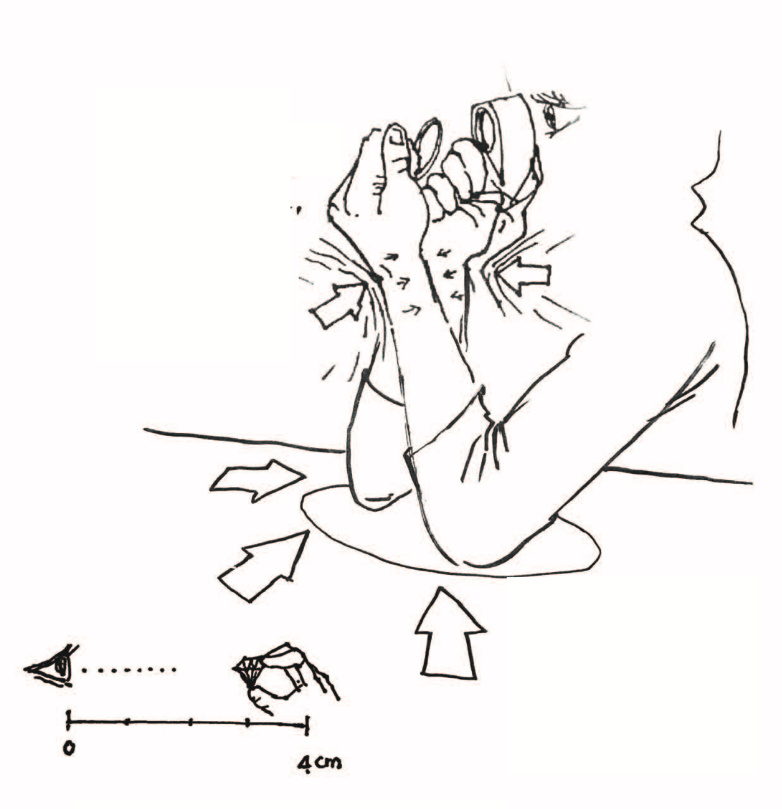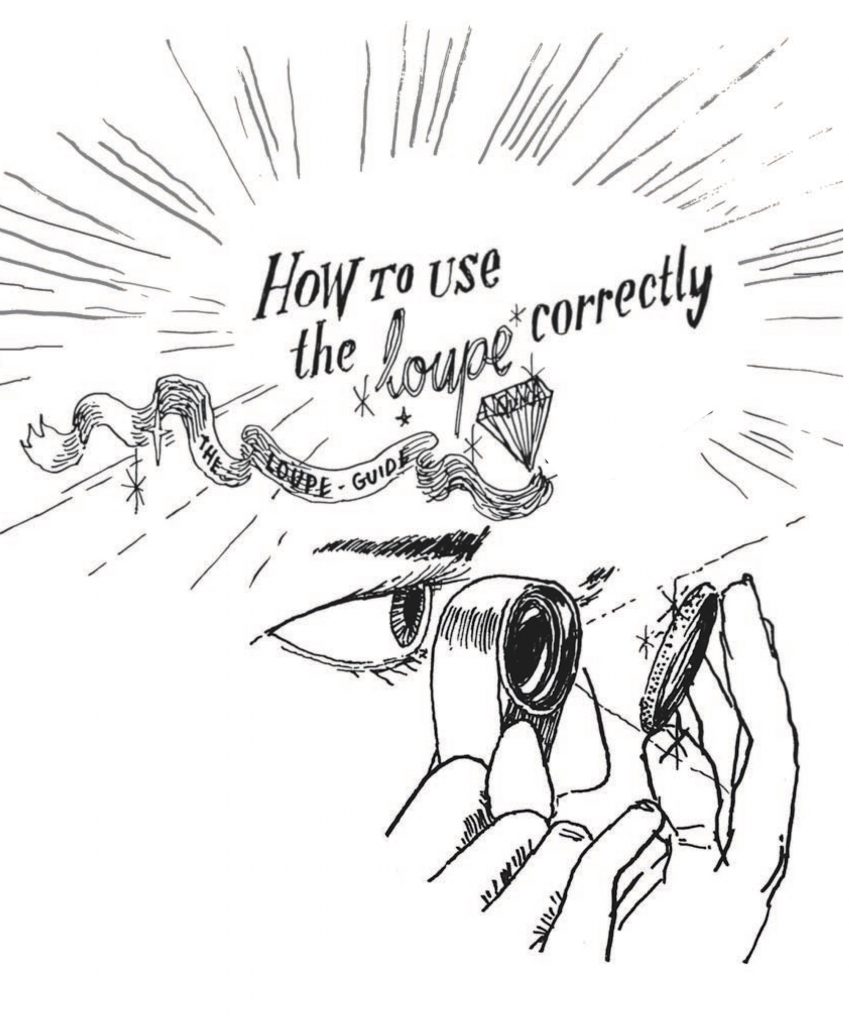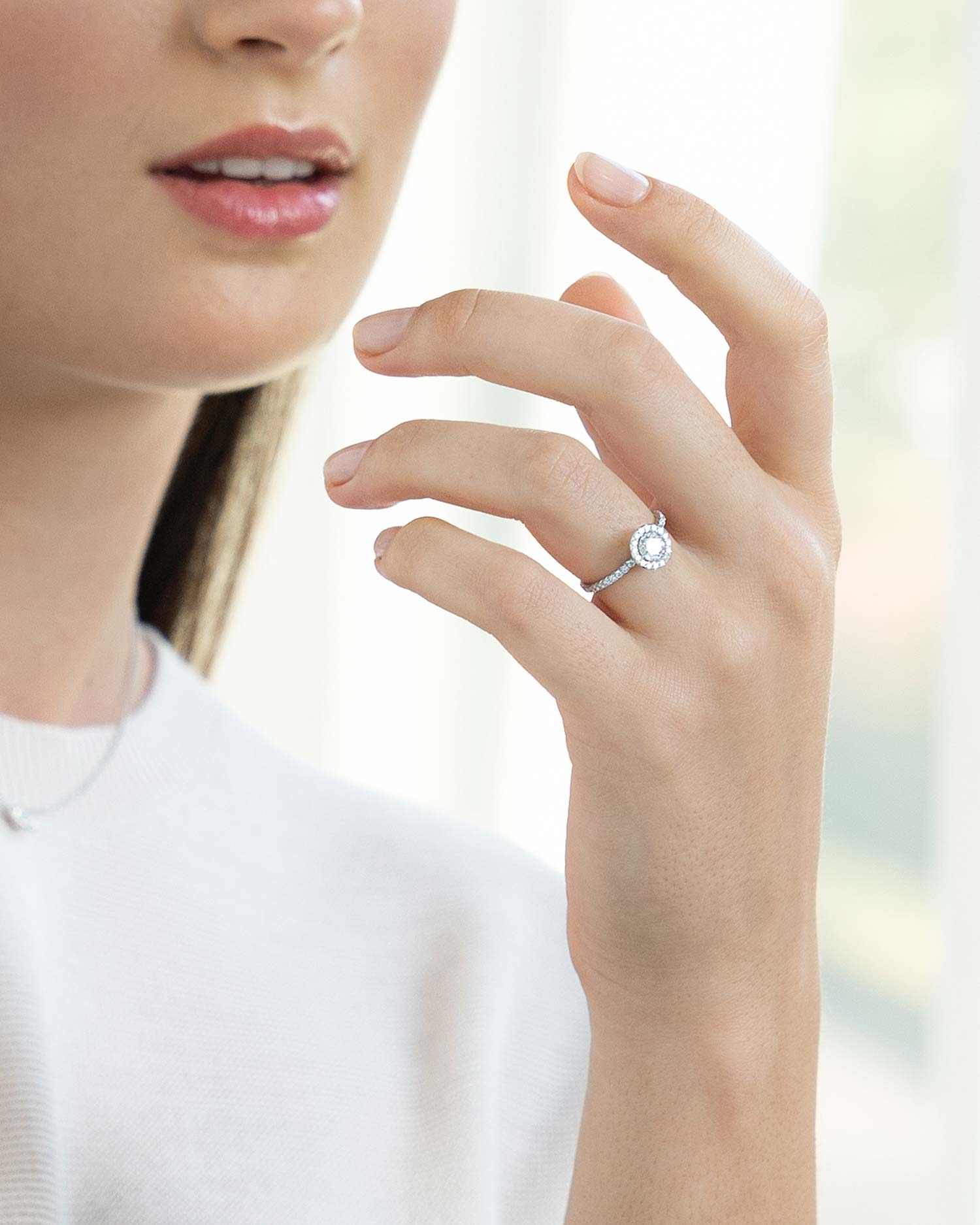
Our first collection Anonymous
To mark our début in the world of fine jewellery, GUINNOT has created the Anonymous collection: an understated tribute to diamonds, inspired by classic design
Choosing a piece of fine jewellery is about more than just first impressions. Naturally, you fall in love with its beauty, style and how it makes you feel, but you also want to be sure that the quality of the materials and finish meet your expectations.
Thankfully, you don’t have to be an expert to judge a piece of fine jewellery for yourself. With either a jeweller’s ‘loupe’ (see below) or an affordable smartphone lens, the hints and tips below, and some practice, you can gain a deeper appreciation of what turns gold and diamonds into a true work of art.
You’ll also learn to tell the difference between a piece of real ‘fine’ jewellery and an imitation with poor craftsmanship or inferior materials.
A loupe (pronounced ‘loop’) is a small magnifying glass commonly used by jewellers to examine a piece of jewellery – maybe you’ve seen one in real life, on TV, or in films. To use one:
Hold the loupe between your thumb and index finger, placing your elbow on the table to keep your hand steady;
Place the fingers holding the loupe against your face, and position the lens in front of your eye;
Bring the piece of jewellery in front of the lens and move it forwards and backwards until it comes into focus and the details are sharp.

Once you’re feeling comfortable with using the loupe, or the magnifying lens on your smartphone, examine your piece of jewellery by looking at each of the aspects below.
With a little practice on different pieces, you may start to spot the differences between brands, and understand which ones really deliver the quality they claim to.
Polishing: A new piece of jewellery should be impeccably polished, with not a single scratch. Any reputable brand will take the utmost care in handling and packing a finished piece, so there should be no reason for a piece to be scratched. Check any new piece of jewellery for scratches, and if you find any, simply return the piece.
Setting: This is little harder to detect for a non-expert, but not impossible. A diamond or any precious or semi-precious stone in a piece of jewellery should be set in such a way to expose as much of the stone as possible, while at the same time, holding it securely in place.
You don’t want to lose a diamond, but you don’t want to hide it either. Not all brands show the same respect for craftsmanship, and by comparing pieces you’ll start to understand the difference.
Quality of the metal: Most jewellery is made from gold or platinum mixed with an alloy to increase the strength of the material and achieve the desired colour. There should be no imperfections or cracks in the surface of the metal – if there are, this implies that the metal has not been treated correctly.
Quality of the diamonds: Unless you buy a diamond with a clarity of SI2 or less, there should be no visible impurities in the diamond. Be wary of brands that try to explain any imperfections in diamonds that should be SI1 or higher in clarity.
Soldering/Assembly: A piece of fine jewellery needs to be assembled in such a way that any joints are virtually imperceptible to the naked eye. Soldering lines, if present, need to be clean and uniform, with no gaps or uneven surfaces.

As well as the quality and finish of a piece of jewellery, the way in which it is presented and/or packaged can also tell a lot about a brand’s passion and respect for fine jewellery.
A jeweller who is dedicated to quality craftsmanship should handle their jewels with care and attention, making sure they don’t rub against or scratch each other, and keeping each as pristine as possible. Anything less than this suggests that the jeweller is more concerned with sales than the craft of jewellery.
The packaging of a piece of jewellery can be another important element to consider, as it should give an indication of the value and preciousness of what is inside.
A jeweller should be so passionate about their art that they want the owner to be captivated by the experience of buying or receiving their jewellery.
Fine jewellery is much more than the sum of its parts – thoughtful design, expert craftsmanship, and unrelenting attention to detail transform raw materials into a work of art that you will enjoy for a lifetime, and be proud to pass on to the next generation. You deserve the absolute best when you decide to invest in a piece of jewellery, so don’t settle for less.

To mark our début in the world of fine jewellery, GUINNOT has created the Anonymous collection: an understated tribute to diamonds, inspired by classic design

What happens if my jewellery breaks While we hope you never have to contact us to tell us your GUINNOT jewellery needs a serious repair,

We hope you’ll love your GUINNOT jewellery so much that you want to wear it every day. With a little regular maintenance, you can keep

Your GUINNOT jewellery has been thoughtfully designed and skilfully crafted using only the finest materials. Timelessly elegant, it’s ready to accompany you on all of